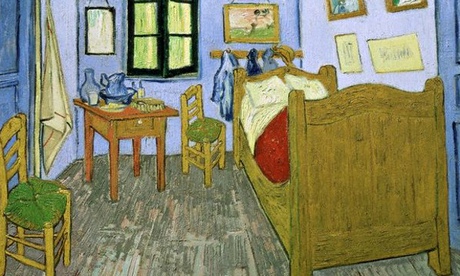
The most important art gallery is the one you carry around with you - in your head, in postcards, in books, or conversations. There are many ways to cultivate such a musée imaginaire of the art you really love. One of the most convenient and aesthetically stunning is Google Art Project, a bold venture that offers an ever-growing digital archive of the world’s greatest art, which you can browse wherever you are and out of which you can assemble your own personal gallery online, a fantasy collection of your favourite art.
Many of the world’s finest museums cooperate with the project, and no wonder. The internet is loaded with images of art of hugely varying qualities, many simply scanned out of old art books. It would be nice if there were other similar projects out there but Google has, characteristically, monopolised this one, and set a gold standard for art reproductions online.
Its high-definition photographs of great paintings, created in collaboration with places like the National Gallery in London and the Uffizi in Florence, allow you to zoom in to study the ridges and drips and brushmarks on the surface of a picture – to appreciate the texture, not simply the iconic image, of a work of art.
Is it like being there? Not quite. There are so many features of art that can only be appreciated in its actual presence: the weight, scale, even smell of art is absent from a digital scan, however magnificent. But we can’t all be jetting off to Moma in New York every time we want to look at Van Gogh’s Starry Night. This way, you can see it in mesmerising closeup, savouring the passionate marks and impulses of Vincent’s brush, wherever you are.
You can also sample the galleries created by users, from museum directors to you and me. Sign in and create your own gallery, or just browse the richest assembly of art on the internet, from conceptual art to Chinese paintings.
I’m a sucker for seeing great paintings and drawings on the project, not because they are inherently better but because its microscopic accuracy makes their nuances so fascinating to explore. The Royal Collection is one of Google’s collaborators, and my personal gallery of masterpieces begins with a red chalk drawing it owns by Michelangelo of a group of nude men shooting arrows (Archers Shooting at a Herm). It is sensual and strong, and you can close in on Michelangelo’s genius. Then I chose The Adoration of the Magi by his contemporary Leonardo da Vinci, in the Uffizi. This mysterious, tantalising, unfinished visionary masterpiece becomes even more enigmatic when you look closely at its shadowy details.
Van Gogh’s painting The Bedroom, from the Van Gogh Museum in Amsterdam, is an intense expression of loneliness and longing as the troubled artist portrays himself through the stuff in his room. Its powerfully built-up paint can be seen in squidgy, oily technicolour close-up. So can the broken, hesitant, ambivalent searchings of Cézanne in his great painting The Chateau Noir from Moma. Finally, from the Musée d’Orsay in Paris, I chose Rousseau’s primeval dream painting The Snake Charmer, sinking into its green world whenever I like.
Quite a private collection – and with this powerful tool for learning about and enjoying art, you too can own the greatest masterpieces on earth.
Get started: click on “My Galleries” on google.com/culturalinstitute, search by collections and artist, then drag images into your “gallery” one by one

